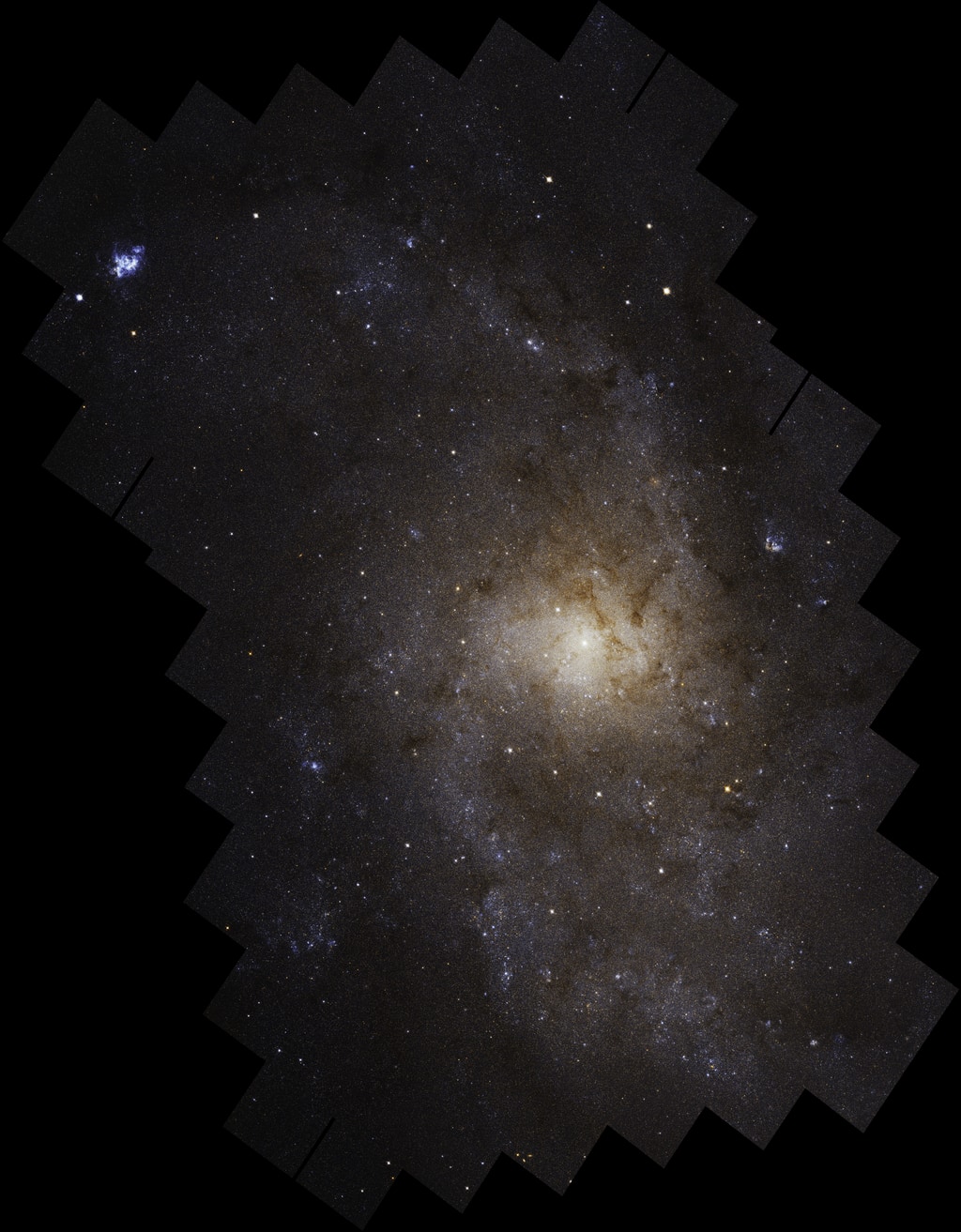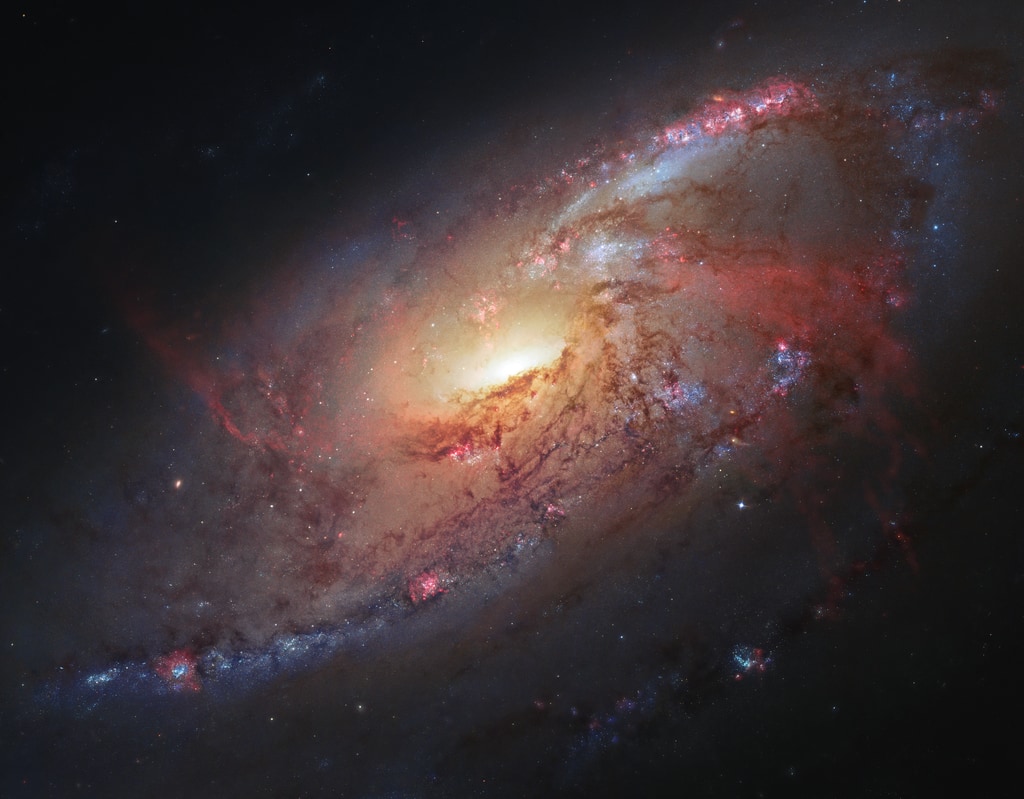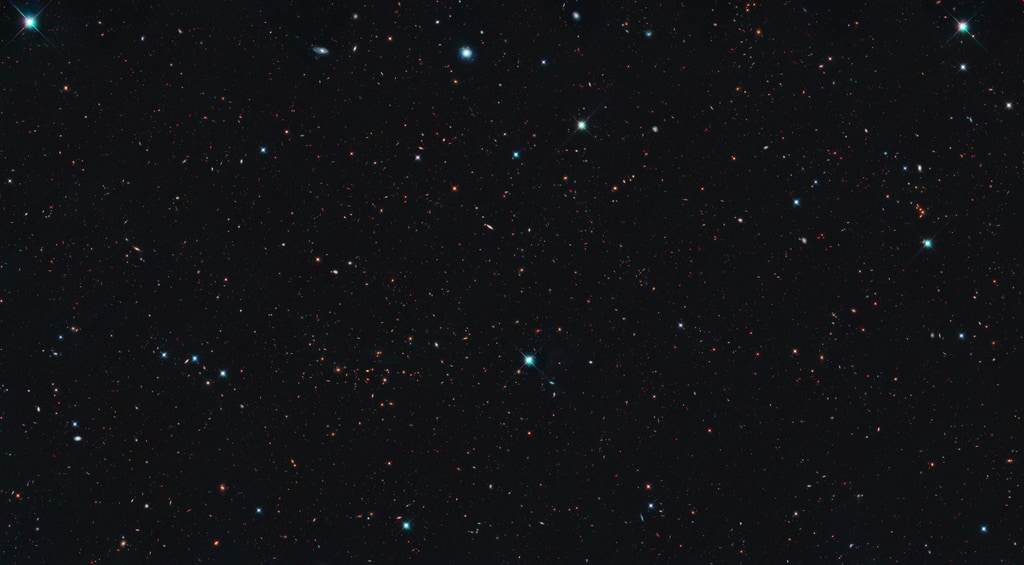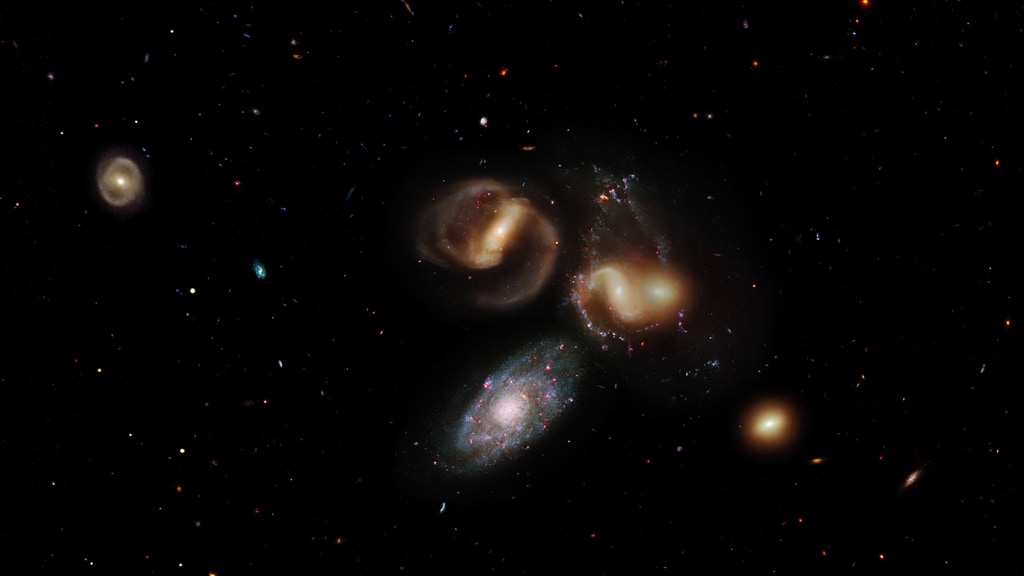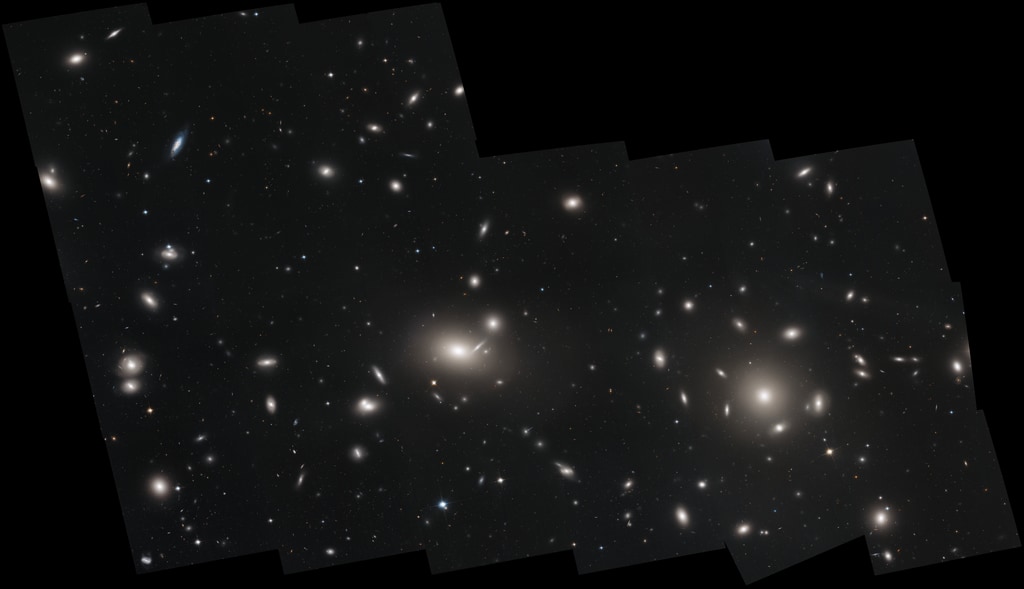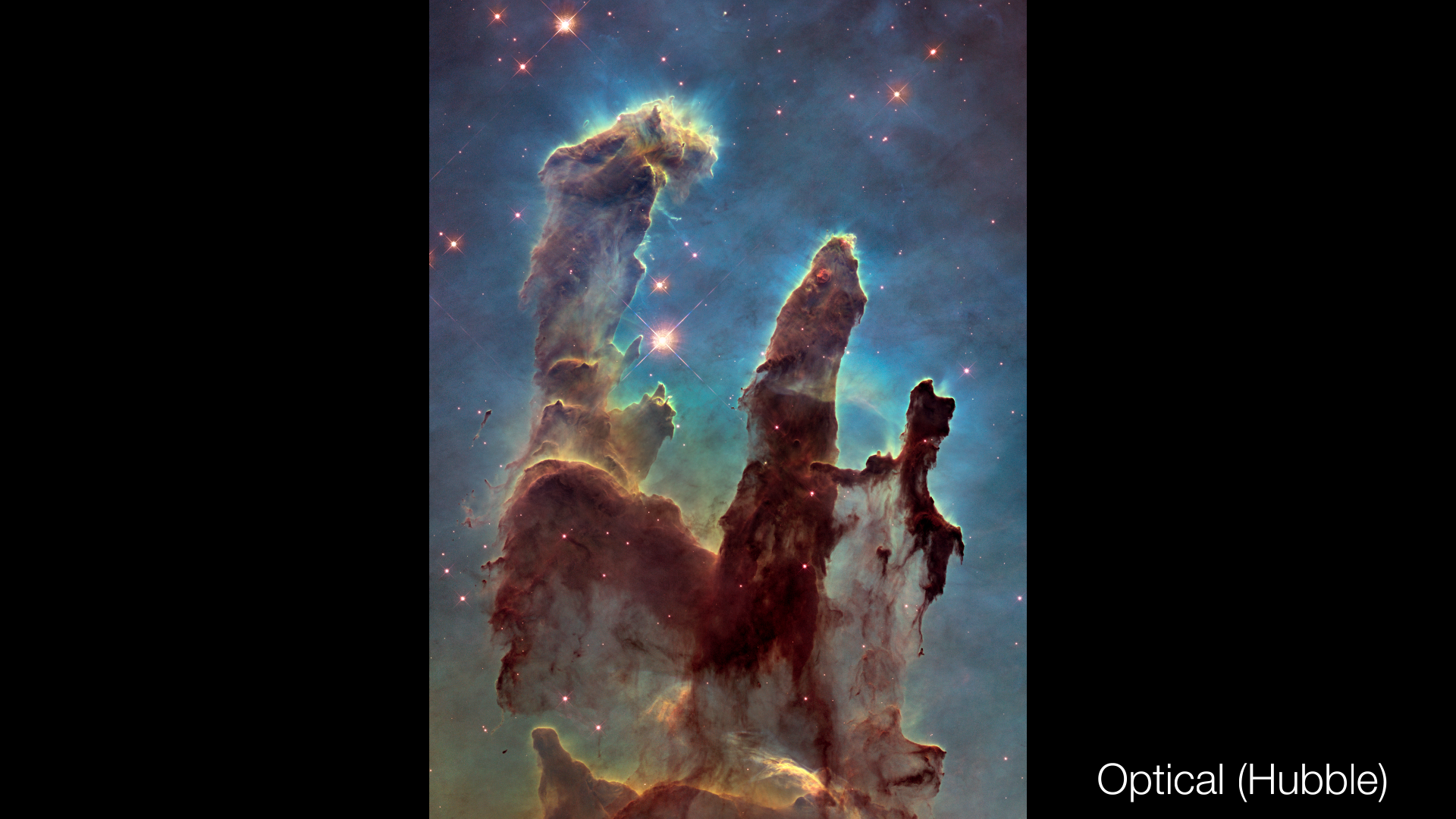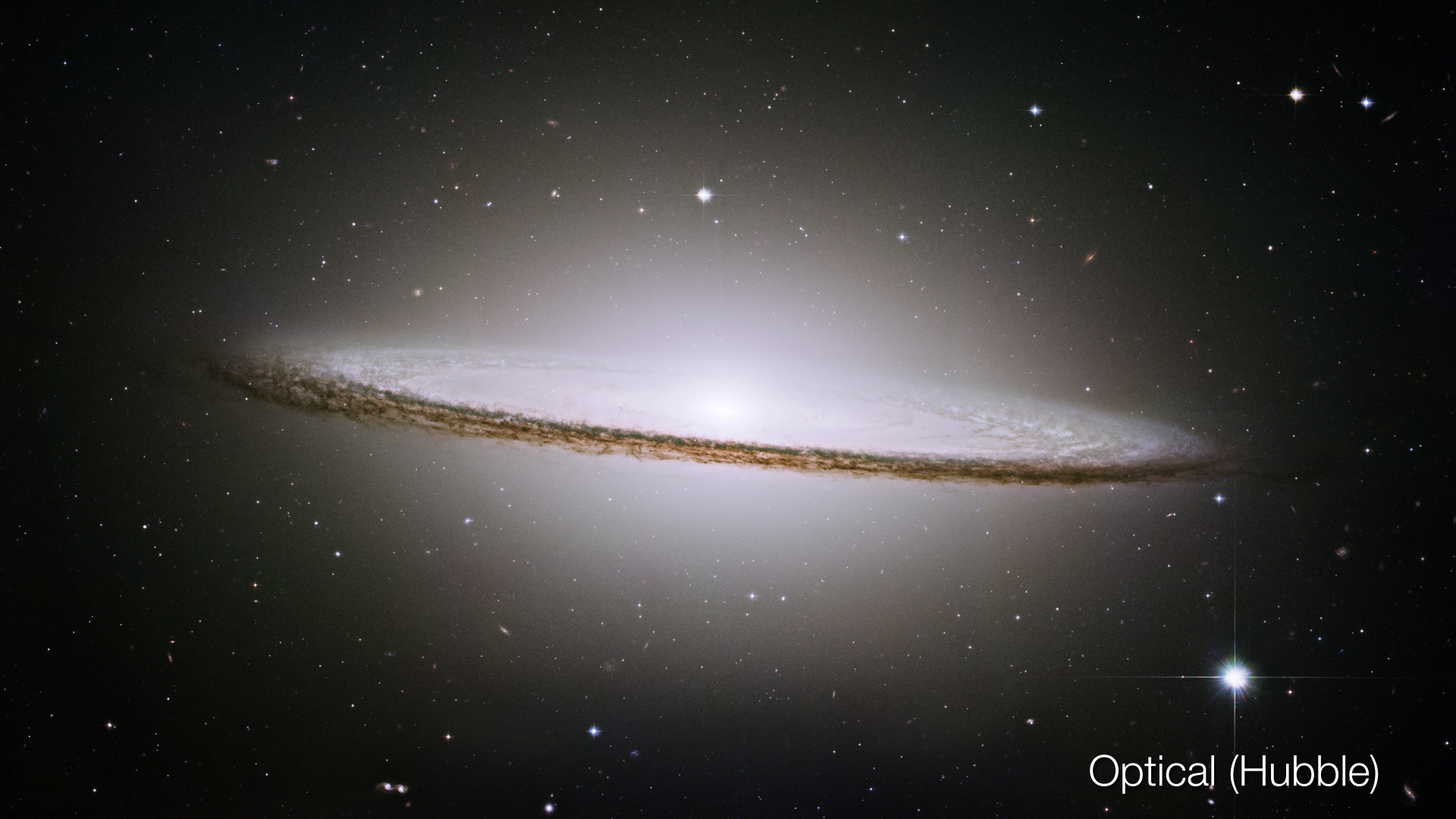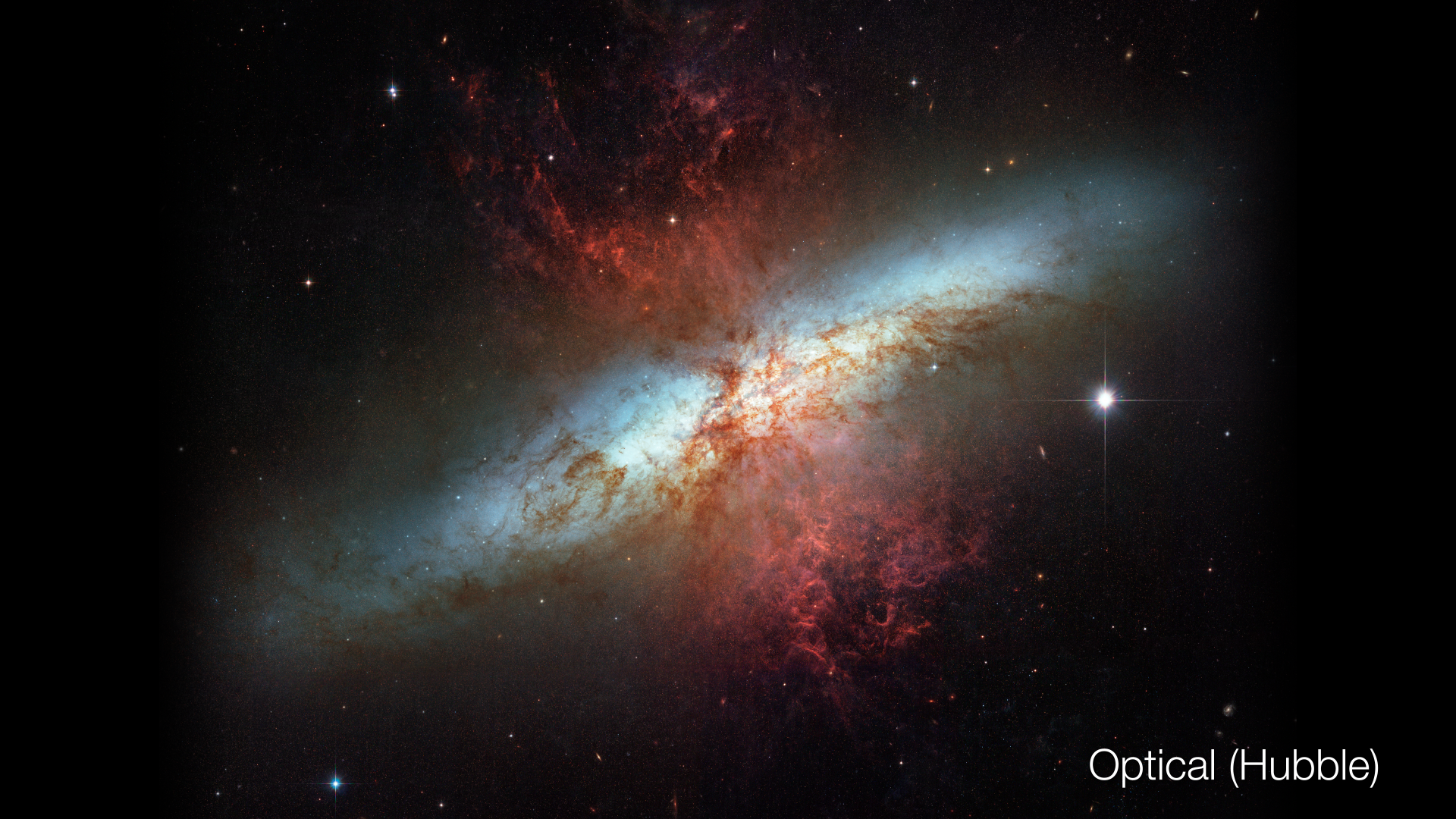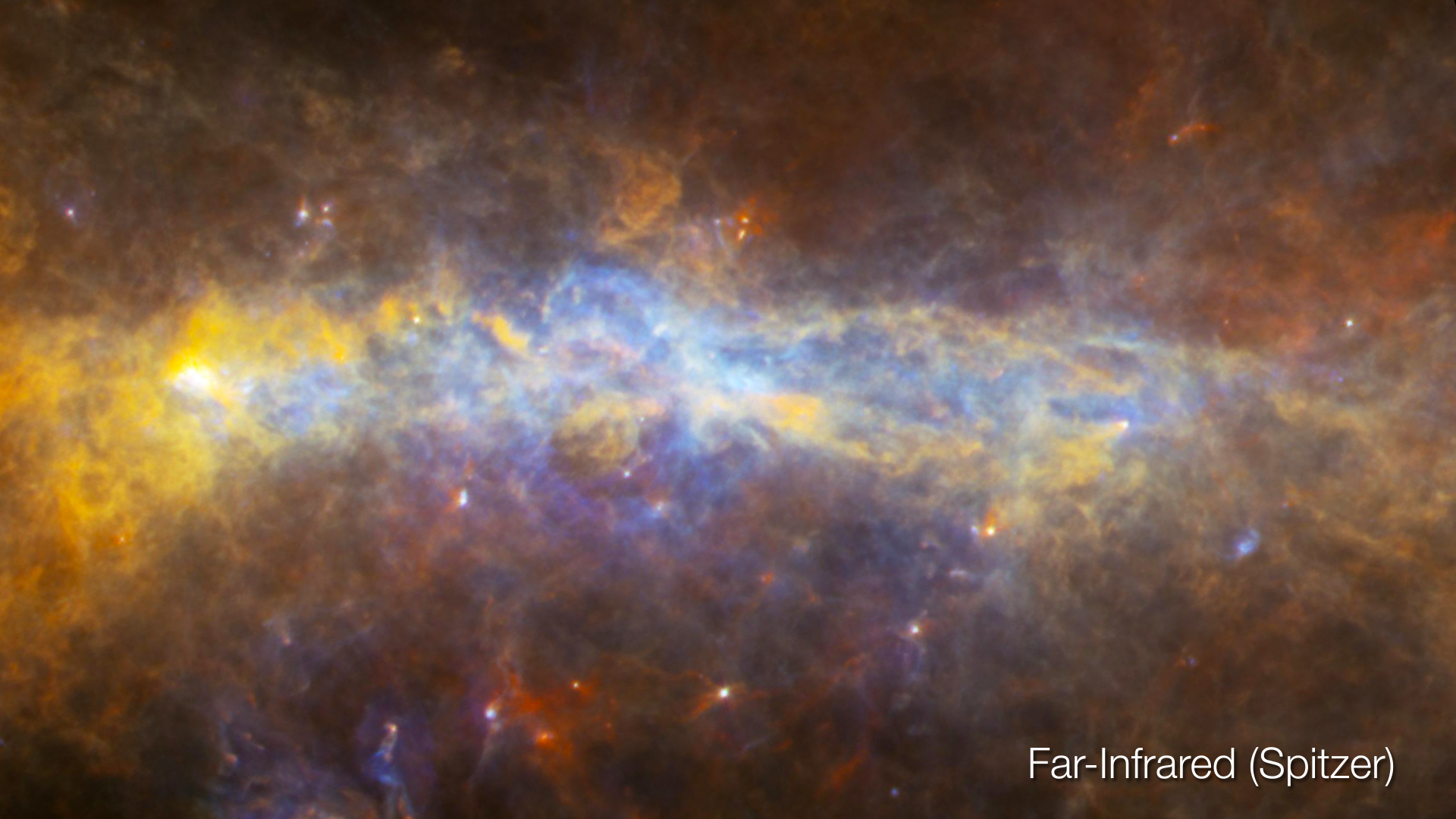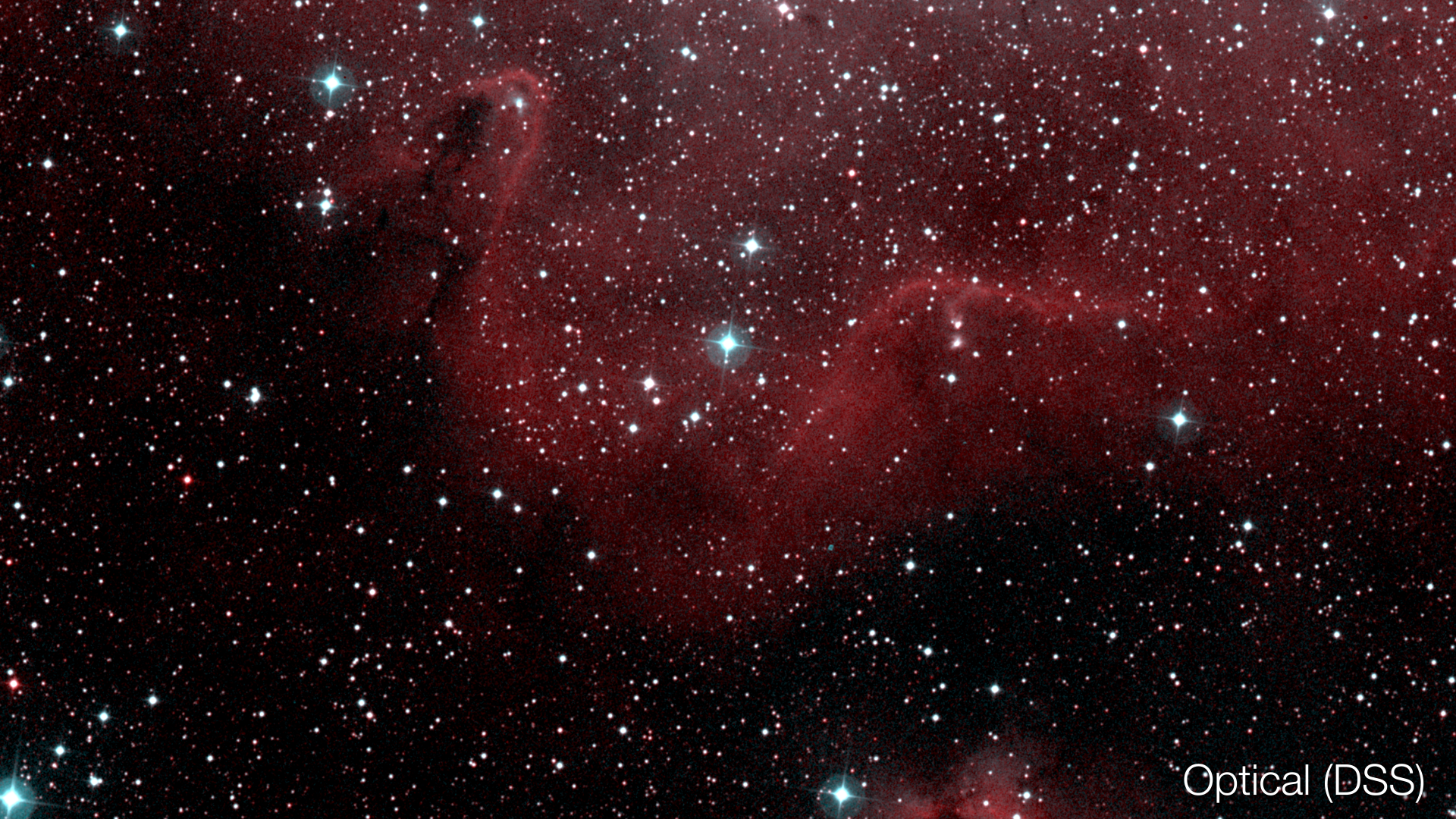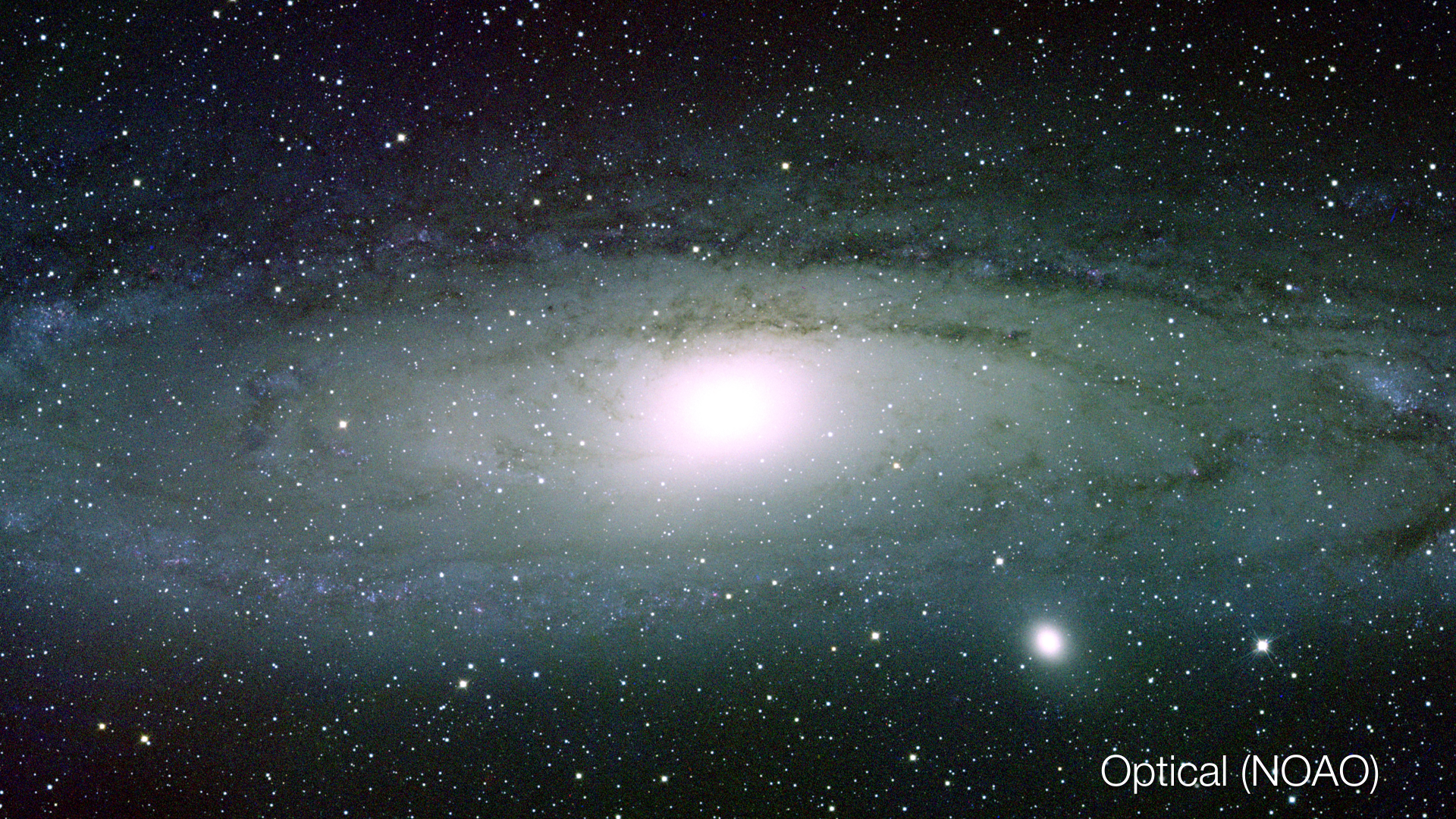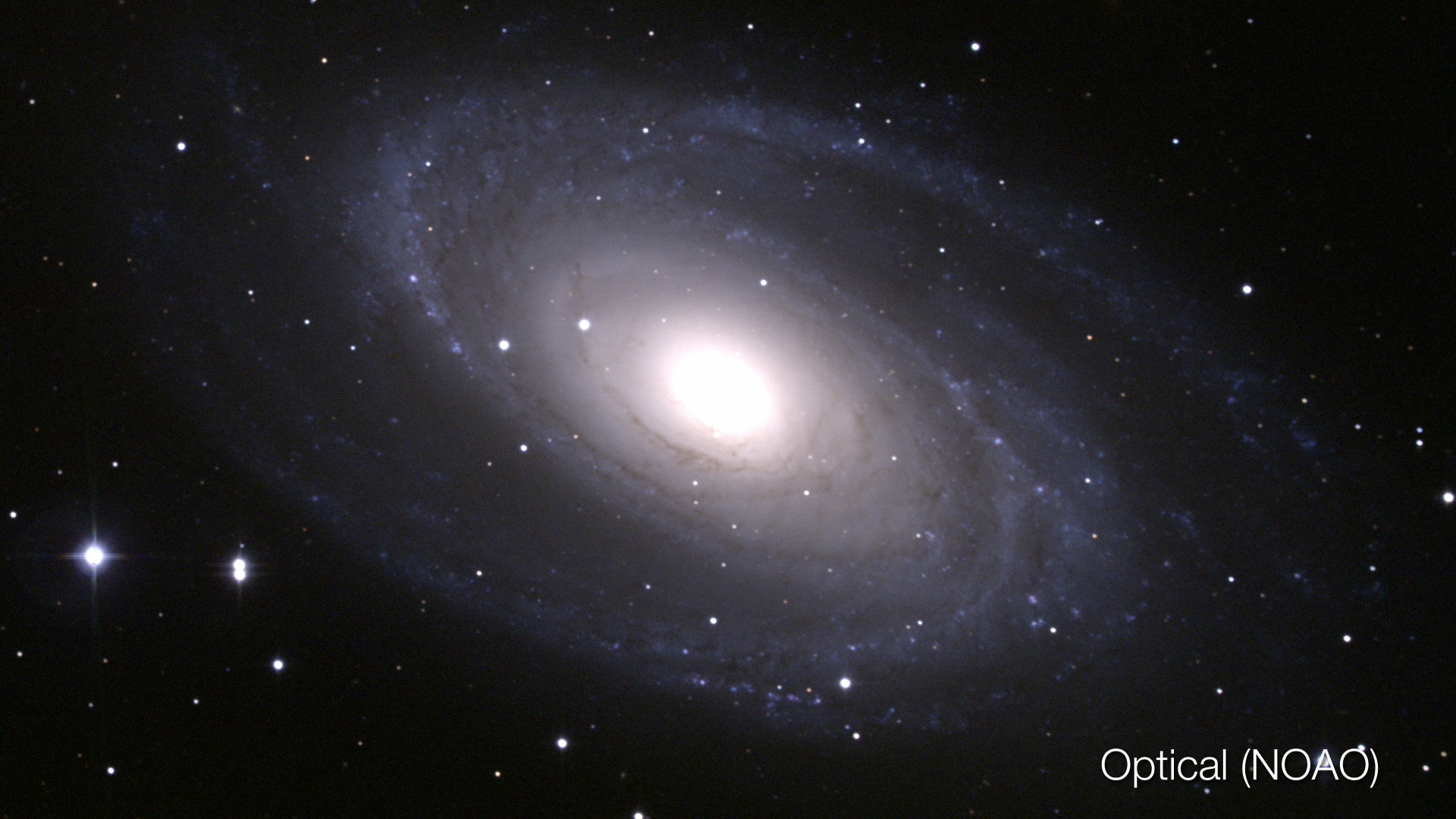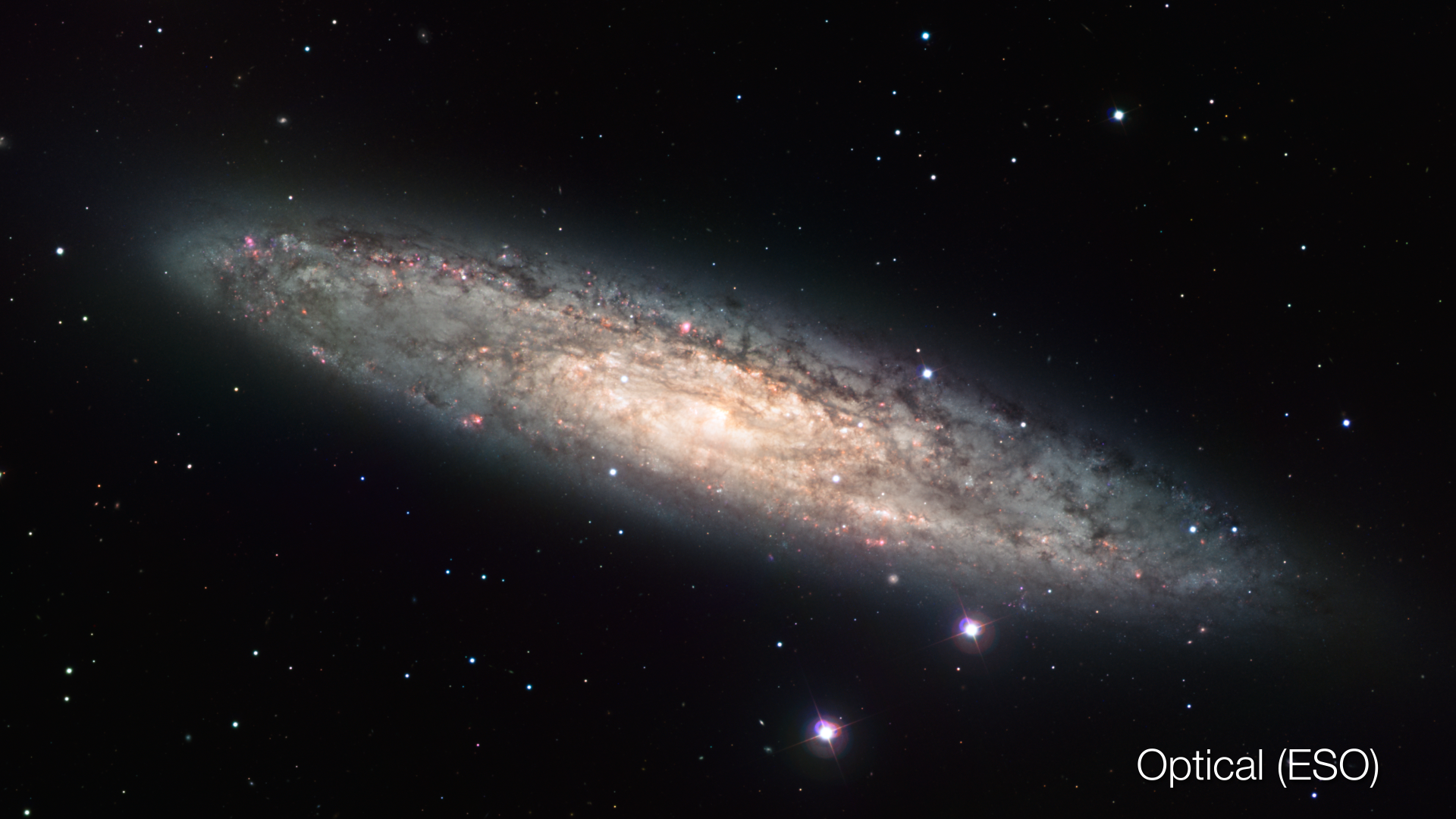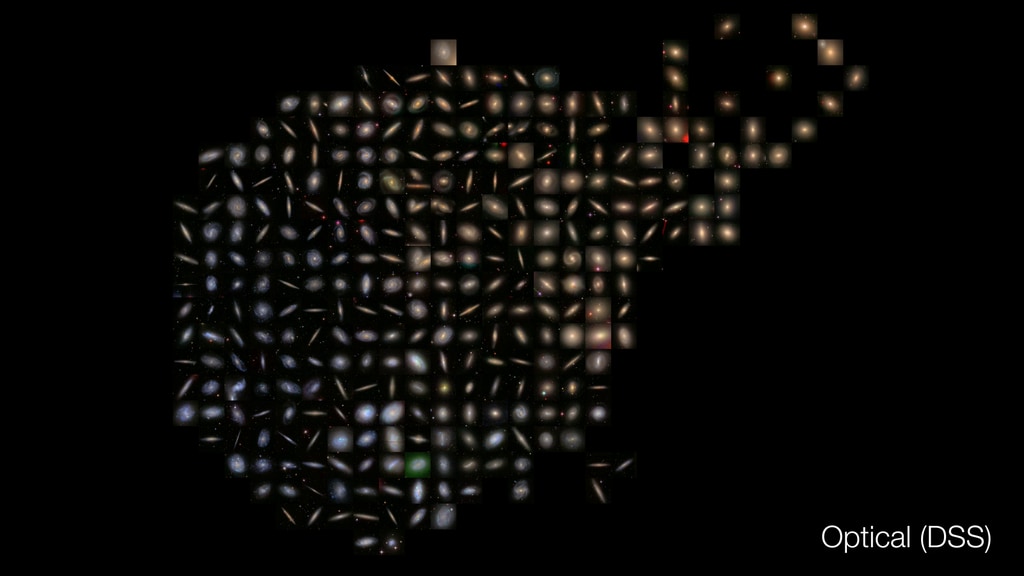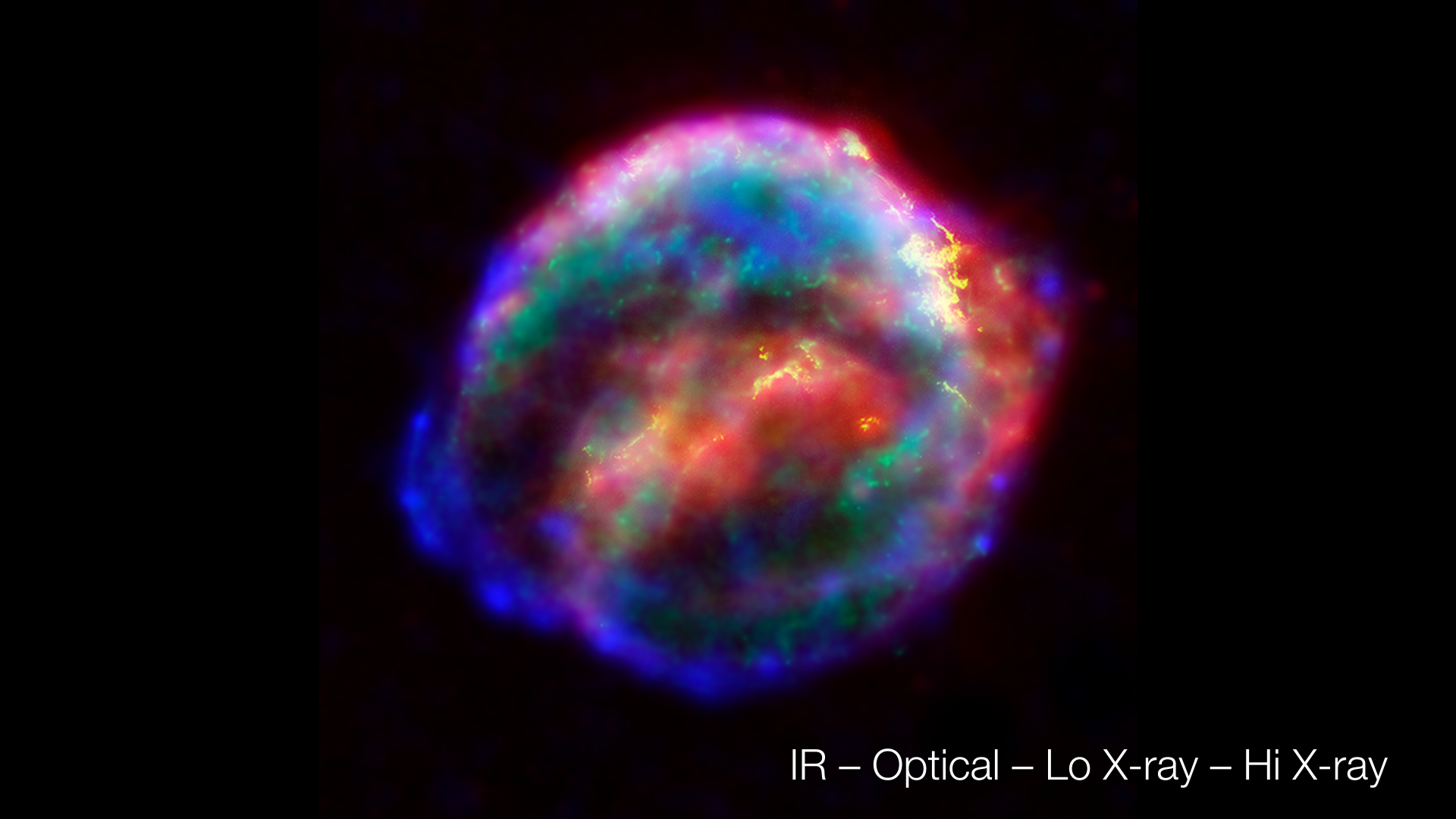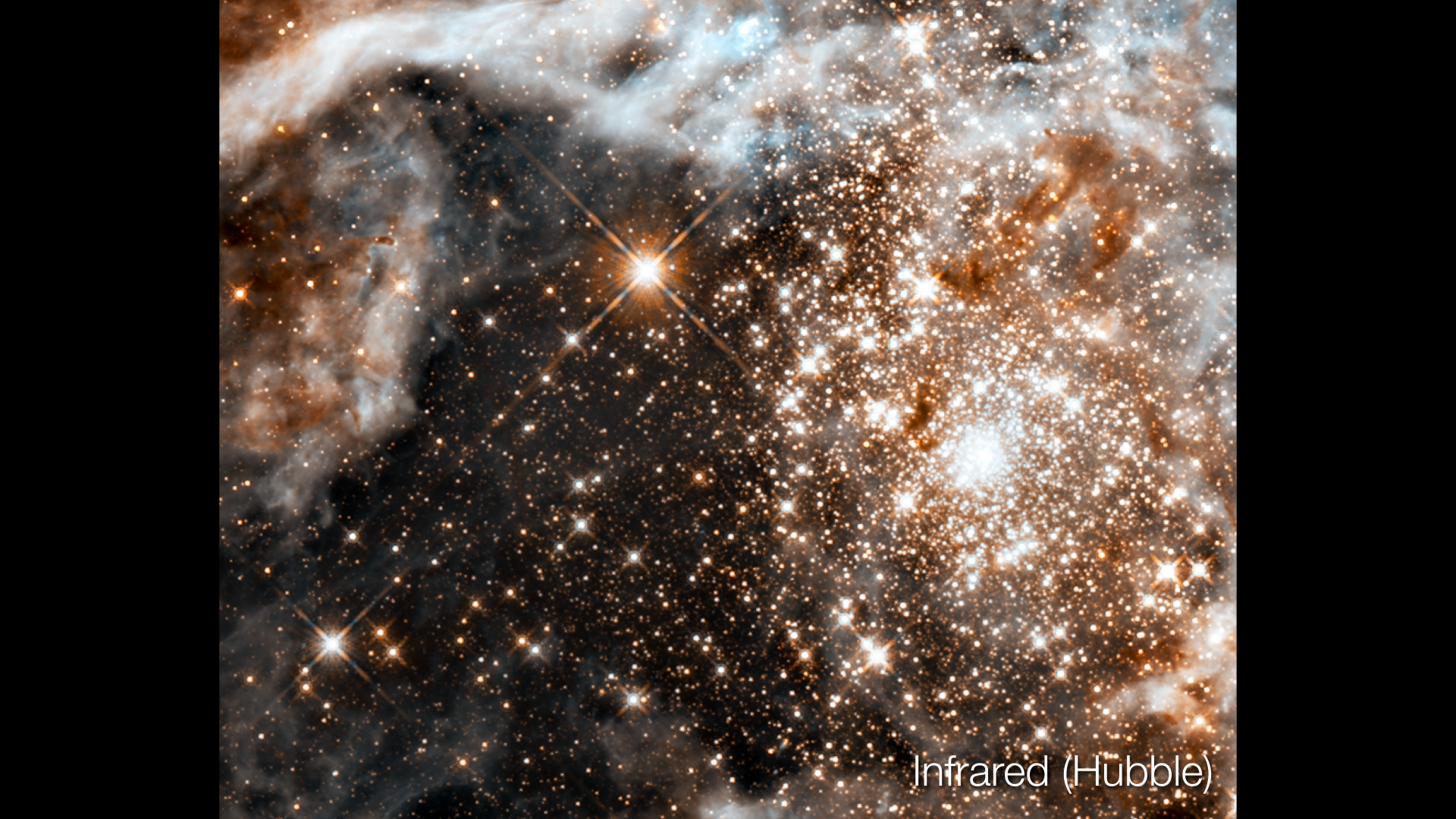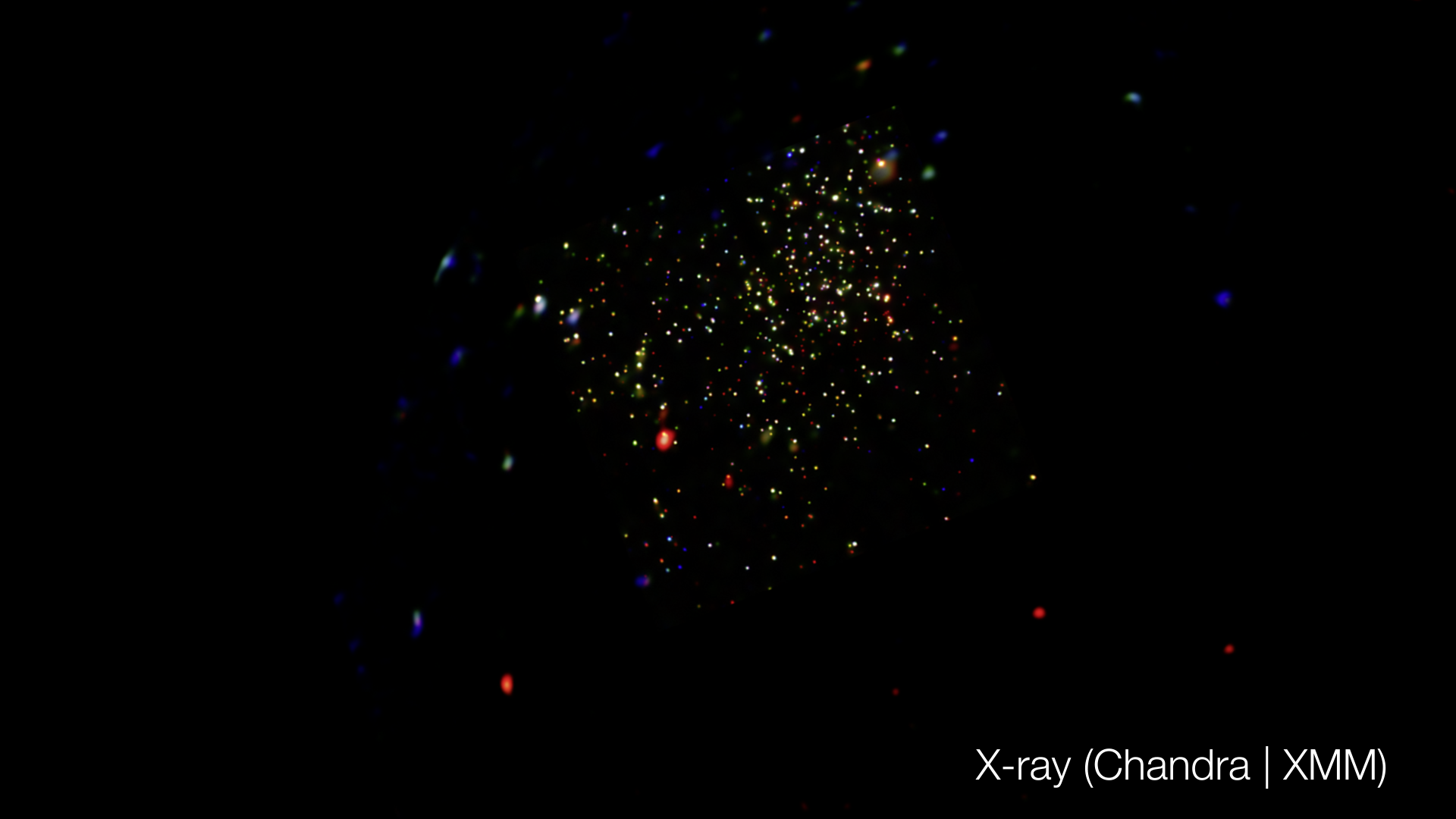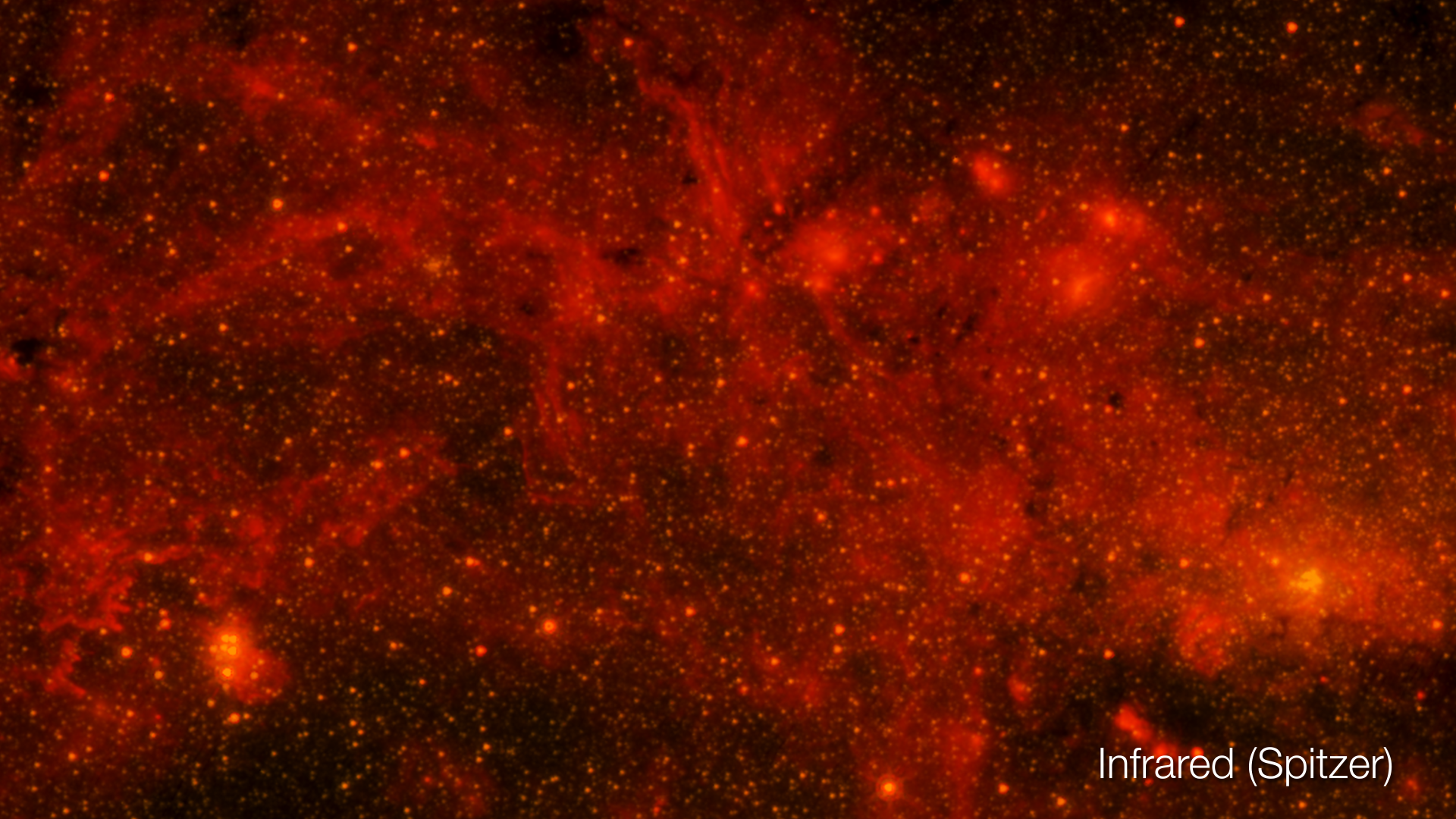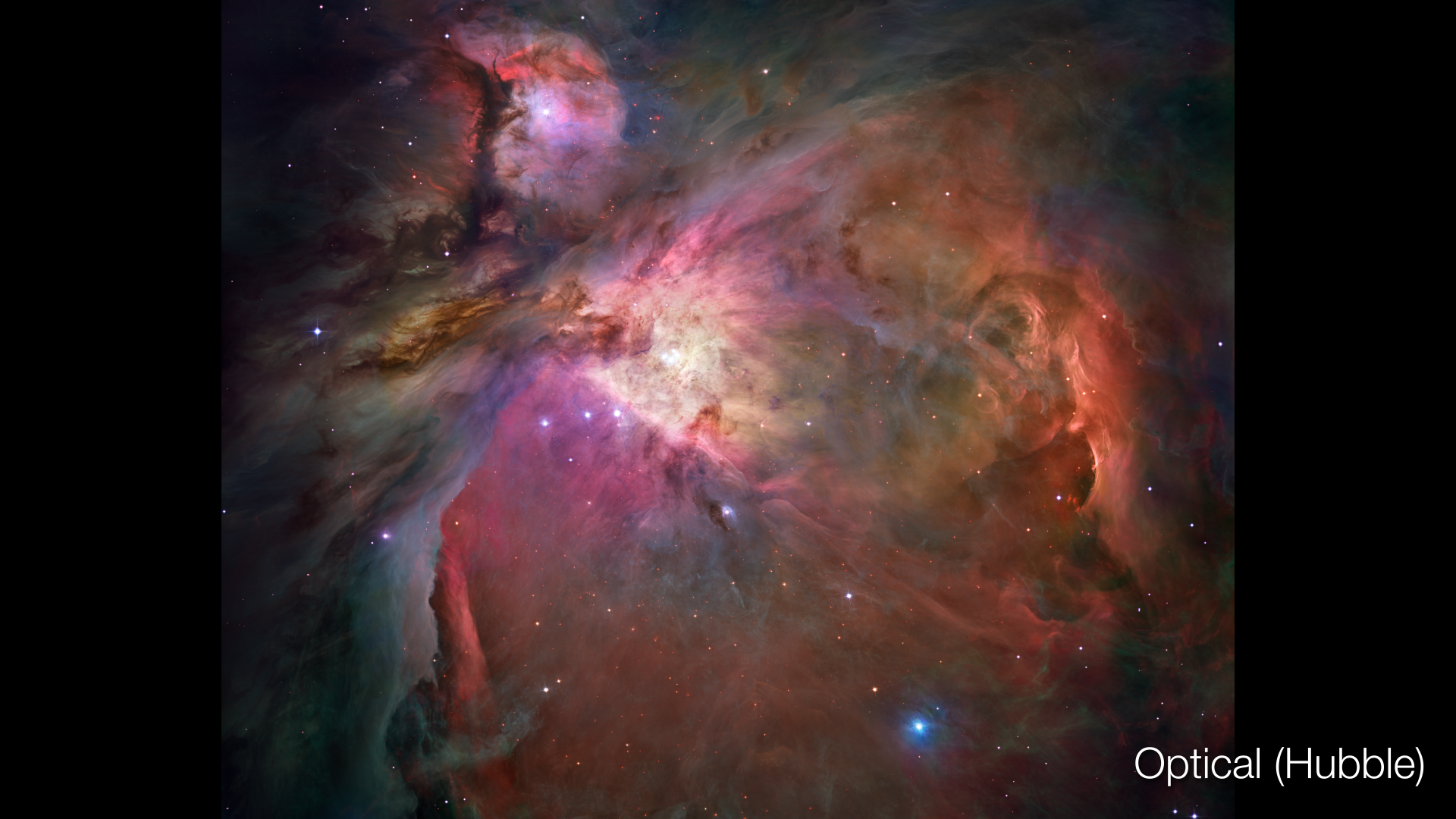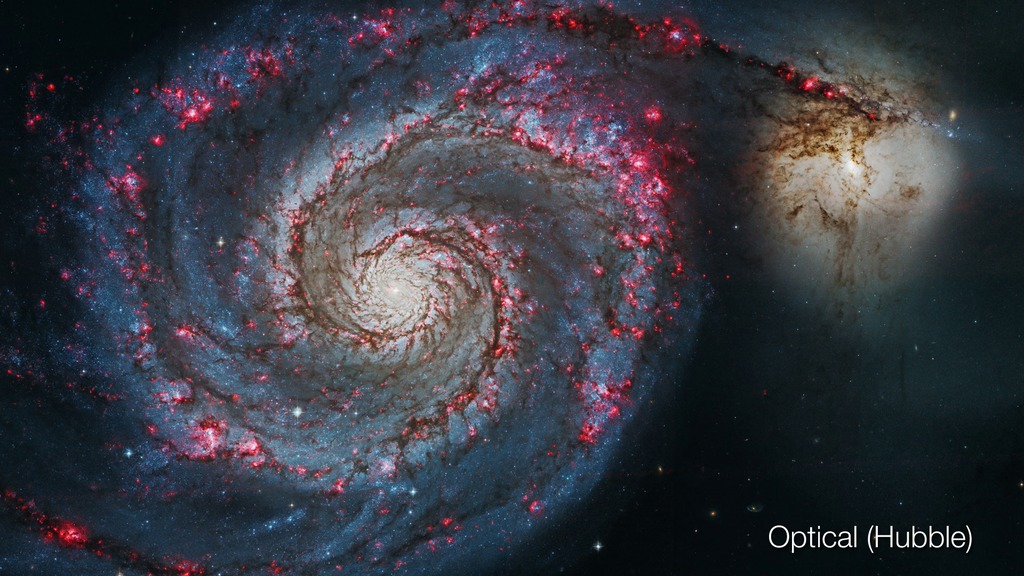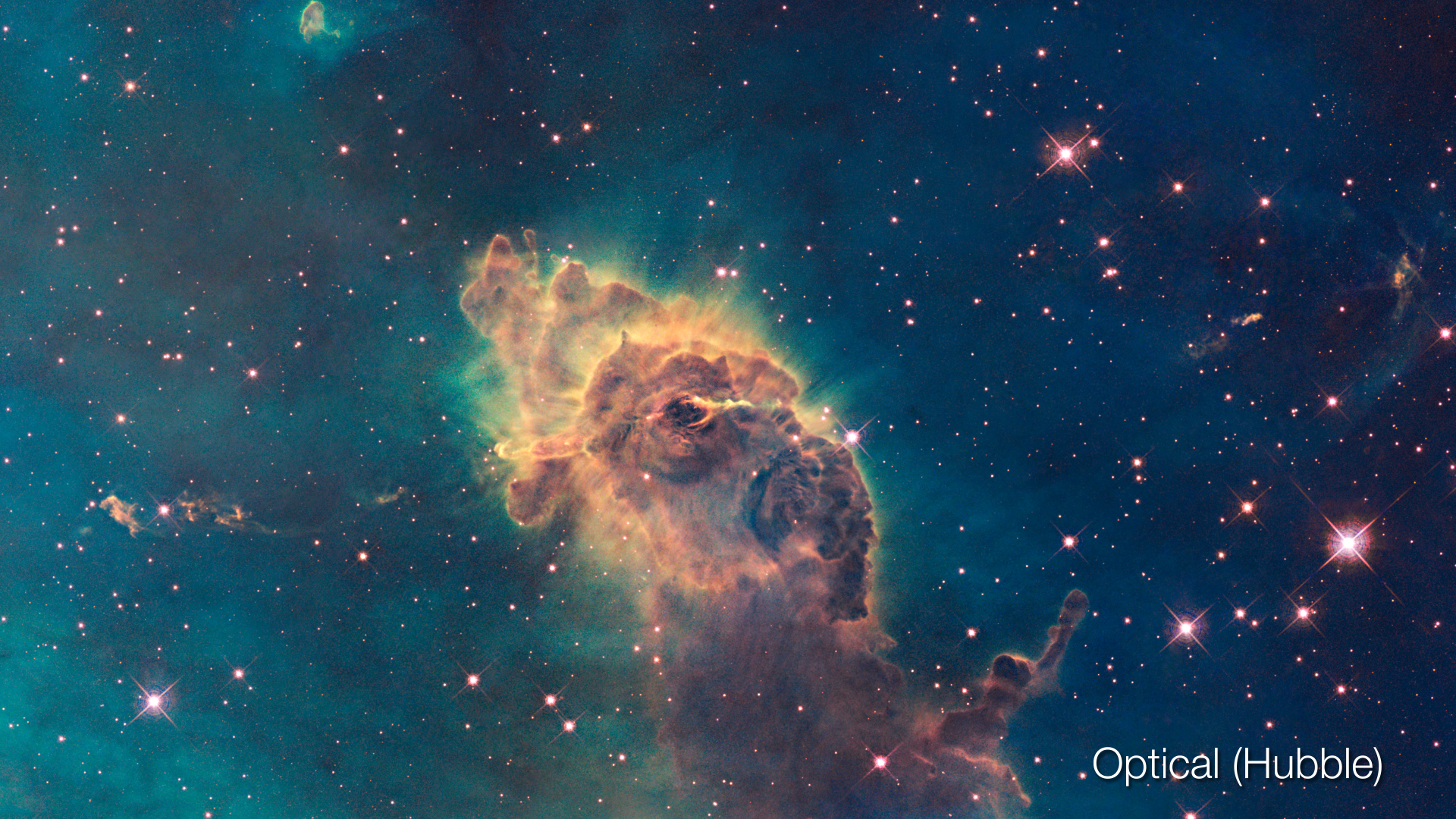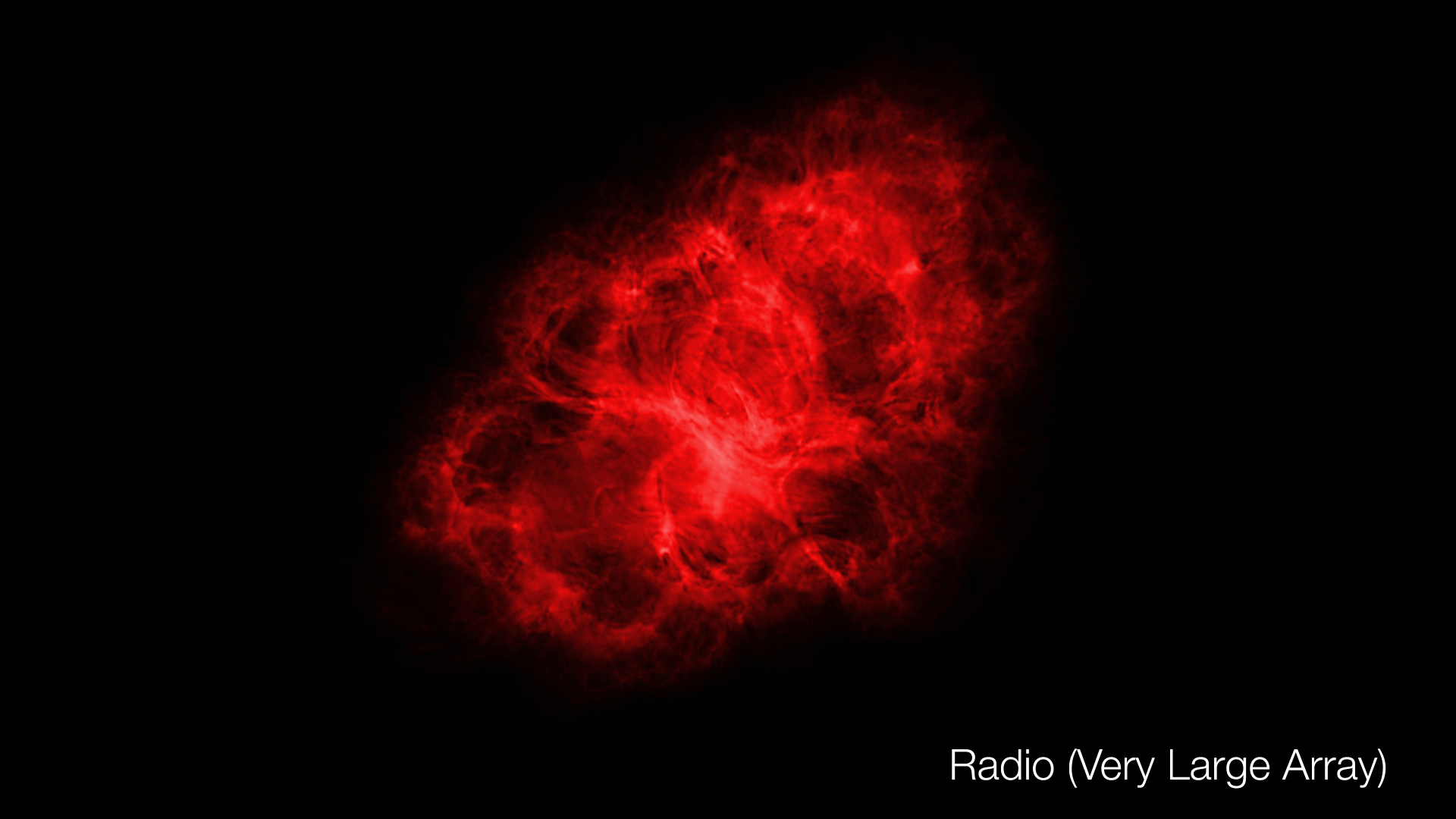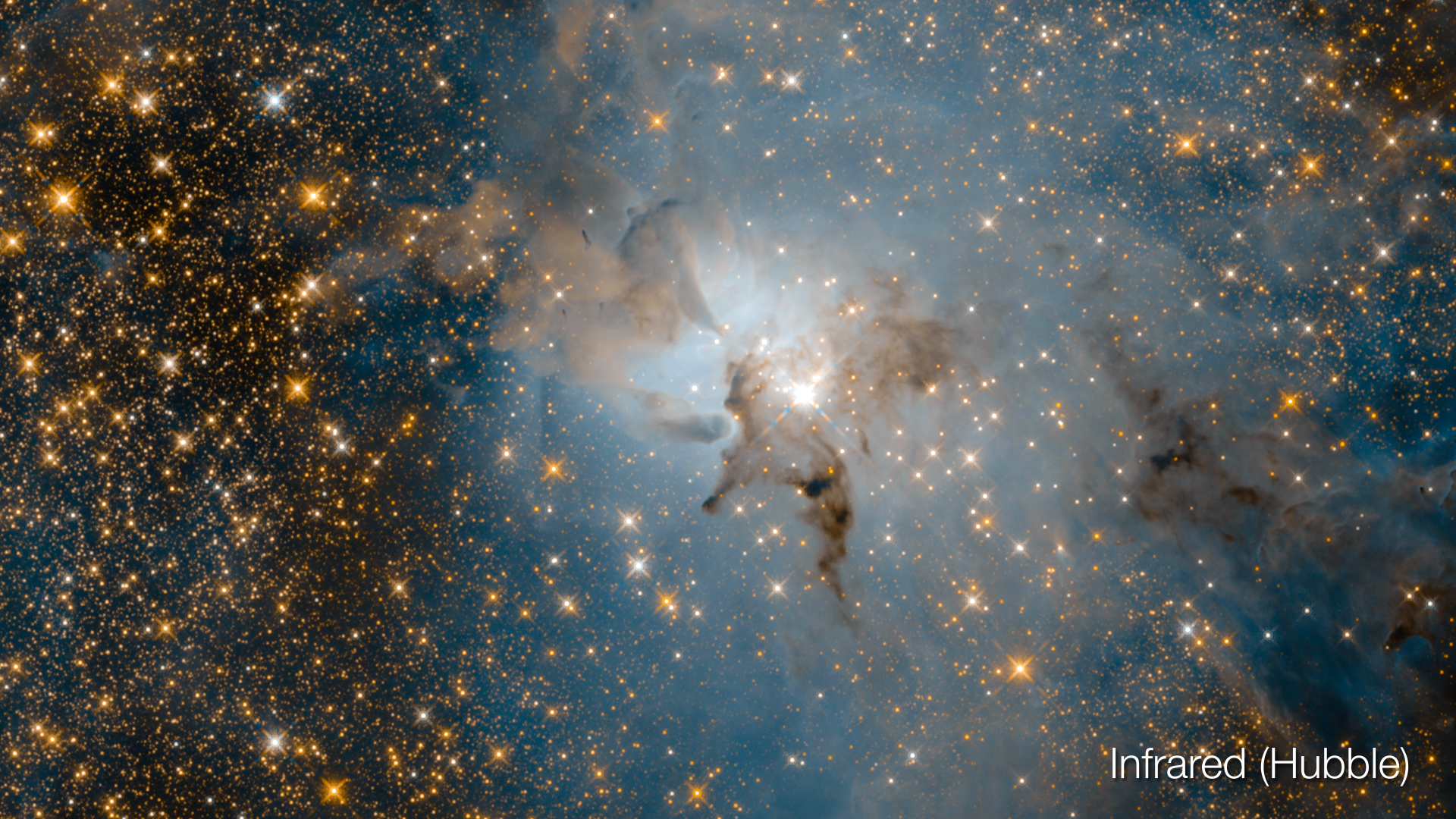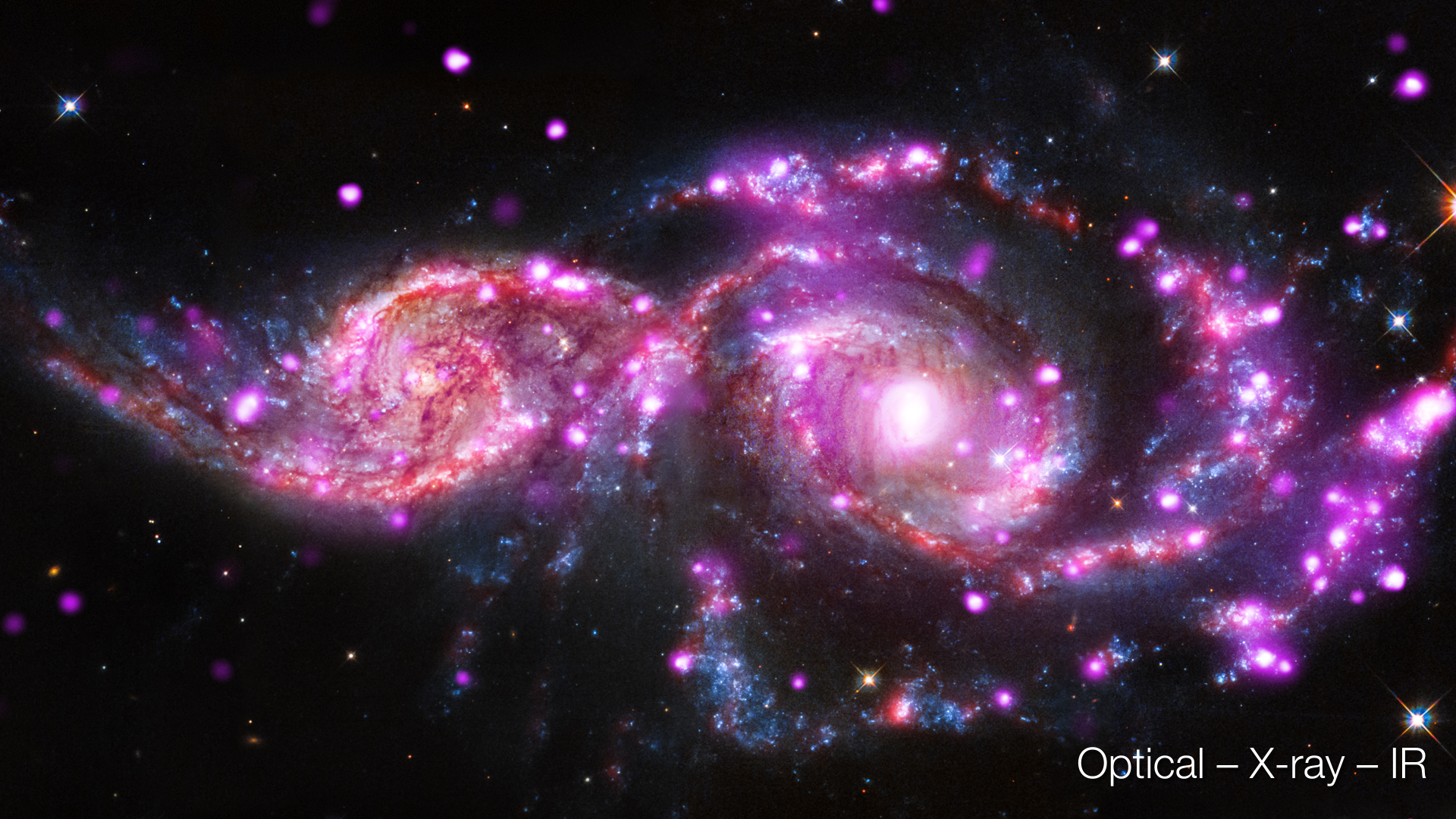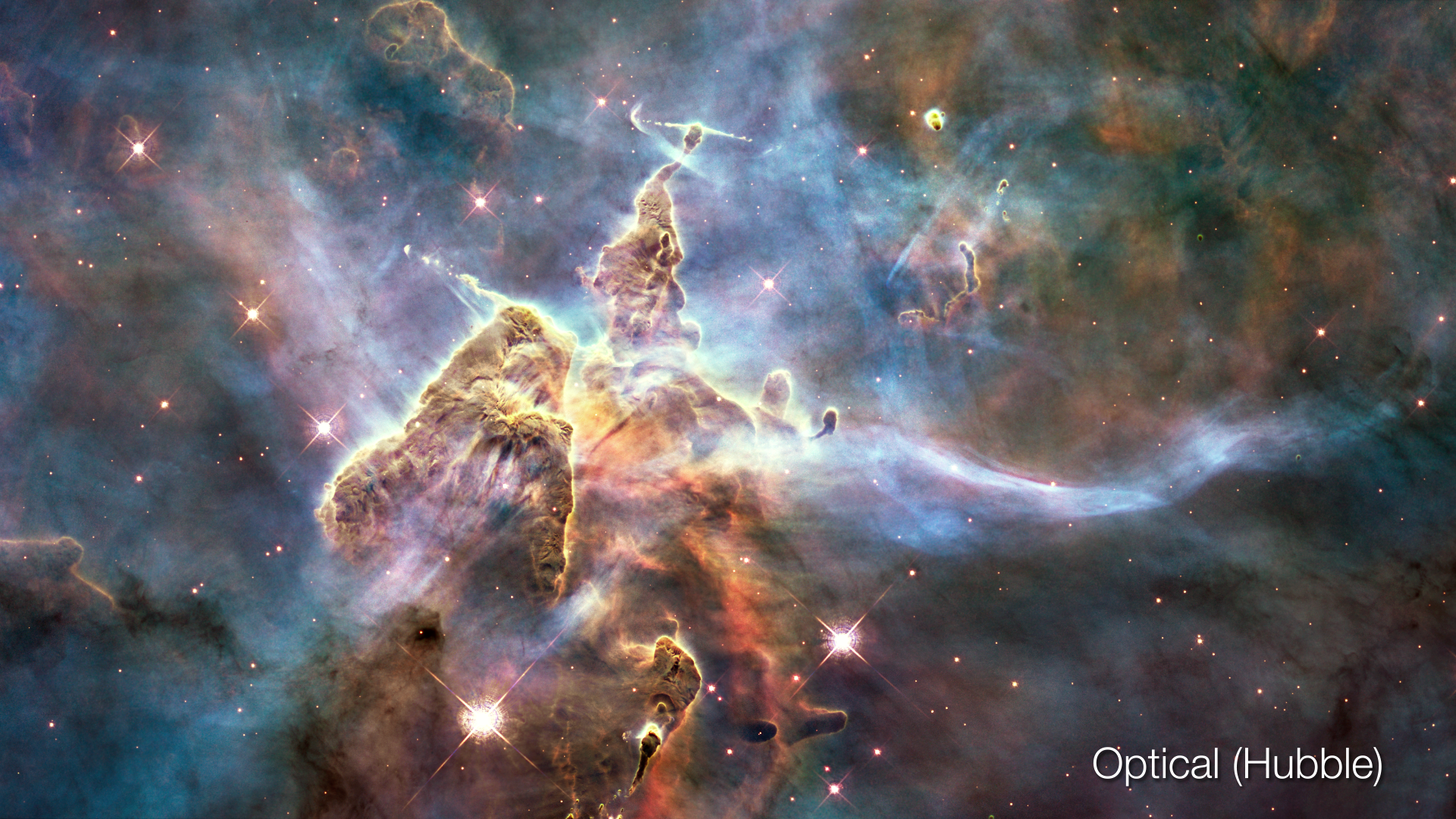Galaxy Cluster Abell S1063

Massive galaxy cluster Abell S1063 is shown at the center of this Hubble image, surrounded by more distant galaxies that are magnified and warped by the cluster’s immense gravity. A faint haze of intracluster light is visible between the galaxies, produced by free-floating stars.
The powerful resolution and sensitivity of NASA’s Hubble Space Telescope reveal wonders of the universe in this image. The ability of gravity to warp the fabric of space itself is displayed, as the massive galaxy cluster Abell S1063 at center is surrounded by the distorted and magnified light of galaxies much farther away. The combined mass of the galaxies in the cluster act as a natural magnifying glass or funhouse mirror, showing amazing detail, but with a warped effect.
Natural magnifiers like these allow scientists to study details of distant galaxies they could not see otherwise. The distant, warped galaxies also provide information about the cluster that is revealing them. Extreme distortion stretches distant galaxies into a smeared arc, indicating the mass distribution of the galaxy cluster. Likewise, some distant galaxies appear multiple times through the “lens,” and any changes within them, like a supernova, will show up in one reflection of the galaxy and then another, indicating how light is travelling through the distorted space.
Hubble also captures the faint intracluster glow between the galaxies that make up Abell S1063, produced by free-floating “orphan” stars that were thrown from their galaxies during mergers. These stars align themselves with the overall gravity map of the cluster, and have been used as an indicator of where dark matter is distributed. In this way, the intracluster light is used to trace the location of dark matter, which is in itself undetectable.
For More Information
See the following sources:
Credits
Please give credit for this item to:
NASA, ESA, and M. Montes (University of New South Wales)
-
Visualizer
- Greg Bacon (STScI)
-
Image processing
- Mireia Montes (University of New South Wales)
-
Technical support
- Leann Johnson (Global Science and Technology, Inc.)
Release date
This page was originally published on Monday, April 22, 2019.
This page was last updated on Wednesday, November 15, 2023 at 12:41 AM EST.
Missions
This visualization is related to the following missions:Datasets used in this visualization
-
Filters F435W, F606W, F814W; WFC3/IR: F105W, F125W, F140W, and F160W [Hubble Space Telescope: WFC and ACS]
ID: 1042
Note: While we identify the data sets used in these visualizations, we do not store any further details, nor the data sets themselves on our site.


